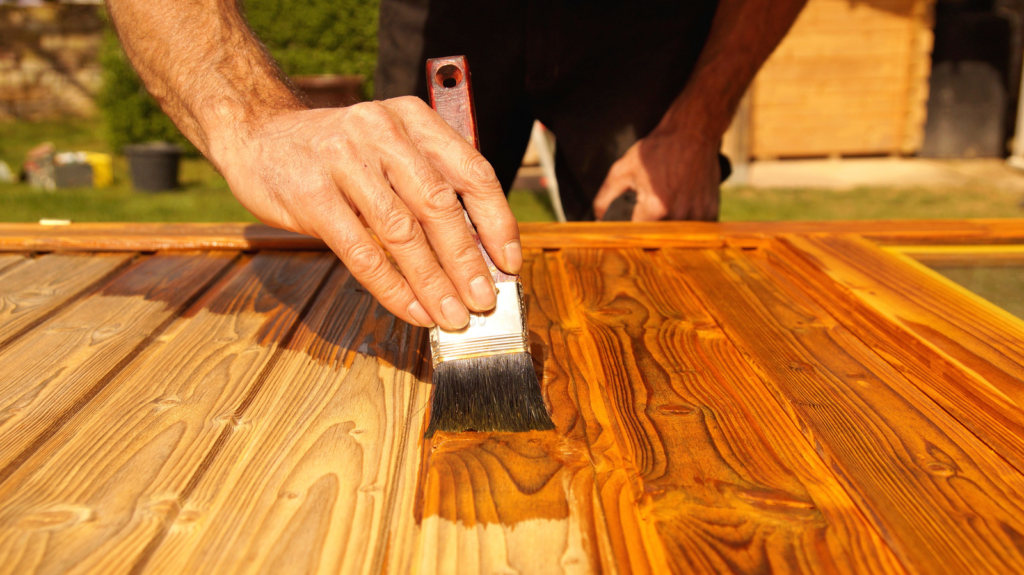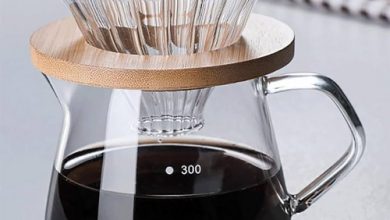Can You Stain Wood with Coffee? A Comprehensive Guide
can you stain wood with coffee
can you stain wood with coffee
In recent years, there has been a noticeable shift towards eco-friendly and natural alternatives in various DIY projects, including woodworking. One such trend gaining traction is the use of everyday household items like coffee to stain wood surfaces. But the burning question remains: Can you stain wood with coffee effectively?
As more individuals seek environmentally sustainable options for their projects, the allure of using coffee as a wood stain has grown significantly. This trend aligns with the broader movement towards utilizing natural, non-toxic materials in DIY endeavors. With concerns about the environmental impact of traditional chemical-based stains, many DIY enthusiasts are turning to alternatives like coffee for a more eco-conscious approach.
However, amidst the buzz surrounding this unconventional staining method, the fundamental question persists: Can you truly achieve satisfactory results by staining wood with coffee? In this article, we delve into the intricacies of coffee staining, exploring its effectiveness, application techniques, and the overall feasibility of using coffee as a wood stain. So, let’s embark on a journey to uncover whether coffee can indeed leave its mark on wood surfaces.
Understanding the Concept of Staining Wood with Coffee

1. Define what staining wood with coffee entails:
Staining wood with coffee involves using brewed coffee or coffee grounds to impart color to wood surfaces. Instead of traditional wood stains, which often contain chemicals and synthetic pigments, coffee offers a natural alternative for achieving various shades of brown. This process allows individuals to customize the color of their wood projects while utilizing a readily available household item.
2. Explain the chemical properties of coffee that make it a potential staining agent:
Coffee contains tannins, which are organic compounds responsible for its astringent taste and dark color. These tannins have the ability to bind with the cellulose fibers present in wood, resulting in a stained appearance.
When applied to wood surfaces, the tannins in coffee penetrate the pores of the wood, creating a rich and natural-looking finish. This chemical reaction between coffee and wood fibers is what enables coffee to serve as an effective staining agent.
3. Mention the benefits of using coffee as a stain, such as its eco-friendliness and low cost:
Using coffee as a wood stain offers several advantages over conventional staining methods. Firstly, coffee is a renewable and biodegradable resource, making it an environmentally friendly choice for DIY projects. Additionally, compared to store-bought wood stains, coffee is a cost-effective alternative, as it can be easily brewed at home using inexpensive coffee grounds or leftover brewed coffee.
This affordability makes coffee staining accessible to a wide range of individuals, allowing them to achieve professional-looking results without breaking the bank. Moreover, coffee stains typically emit minimal odors and contain fewer harmful chemicals, making them safer for indoor use and preferable for those with sensitivities to strong fumes.
Overall, the use of coffee as a wood stain aligns with the growing trend towards sustainable and natural DIY solutions. So, indeed, can you stain wood with coffee? Absolutely!
Steps to Stain Wood with Coffee

Step 1: Preparation Before delving into the staining process, it’s essential to gather the necessary materials. You’ll need coffee grounds, water, and a container for brewing and mixing the stain. When selecting the wood for staining, consider the type carefully. Woods like oak, maple, and pine tend to absorb stains well, but experimentation with different wood types can yield unique results. This step sets the foundation for a successful coffee staining project, proving that indeed, you can stain wood with coffee.
Step 2: Brewing the Coffee The quality of the brewed coffee significantly impacts the staining outcome. Brew a strong batch of coffee using coffee grounds and water. Opt for a dark roast for deeper coloration. Using freshly brewed coffee ensures optimal results, as the rich pigments are at their peak potency. Remember, the better the brew, the richer the stain. Through this step, we affirm the possibility that you can stain wood with coffee effectively.
Step 3: Applying the Stain Now comes the application stage, where creativity meets technique. There are various methods for applying the coffee stain, including brushing, spraying, or soaking the wood. Each technique offers distinct effects, allowing for customization according to preference. Experimentation with application methods helps achieve desired color intensity and consistency, proving the versatility of coffee as a staining agent. With proper application, it becomes evident that you can indeed stain wood with coffee to achieve beautiful results.
Step 4: Drying and Finishing After applying the stain, patience is key. Allow the stained wood to dry thoroughly to ensure the stain sets effectively. The drying time may vary depending on factors like humidity and wood type. Once dry, consider optional finishing steps to enhance the appearance and durability of the stained wood.
This may include sanding the surface for a smoother finish and applying a sealant or varnish to protect the stain and prolong its lifespan. Through proper drying and finishing techniques, the potential of staining wood with coffee is realized, demonstrating that you can stain wood with coffee while achieving professional-quality results.
By following these steps, anyone can embark on a coffee staining project with confidence, showcasing the versatility of this natural and eco-friendly alternative to traditional wood stains.
Tip 1: Experiment with Different Coffee Concentrations Experimenting with various coffee concentrations allows you to tailor the staining process to achieve the desired shades and effects on your wood surface. By adjusting the ratio of coffee grounds to water, you can control the darkness and richness of the stain. For example, a higher concentration of coffee grounds will result in a darker, more intense color, while a lighter concentration will produce a softer, more subtle hue.
This experimentation process empowers you to customize the staining outcome according to your preferences and the specific characteristics of the wood you’re working with. Ultimately, the versatility of coffee as a staining agent offers a unique opportunity to explore different shades and effects, providing a personalized touch to your woodworking projects.
Tip 2: Test on a Small Area First Before applying the coffee stain to the entire wood surface, it’s crucial to conduct a test on a small, inconspicuous area. This preliminary test allows you to assess how the wood reacts to the coffee stain and provides valuable insights into the final appearance. Testing on a small area enables you to observe how the wood absorbs the stain and whether it achieves the desired color and effect. Additionally, it helps identify any potential issues or undesired outcomes before committing to staining the entire surface.
By taking this precautionary step, you can avoid unexpected results and ensure that the final outcome meets your expectations. This methodical approach enhances the success of your staining project and minimizes the risk of disappointment or rework.
Tip 3: Consider Adding Enhancements In addition to experimenting with coffee concentrations, consider incorporating other natural ingredients to enhance the staining process and achieve unique effects on the wood. For instance, adding vinegar to the coffee solution can alter the pH level, resulting in a different color tone or intensity. Similarly, introducing steel wool into the mixture can create a reaction that enhances the wood’s grain pattern or adds depth to the stain.
These enhancements offer opportunities to customize the appearance of the stained wood and unleash your creativity in woodworking projects. By exploring the potential of combining coffee with other natural elements, you can elevate the aesthetic appeal of your creations and create one-of-a-kind pieces that showcase your artistic vision and craftsmanship. Experimenting with these enhancements not only expands the possibilities of coffee staining but also adds a layer of intrigue and uniqueness to your woodworking endeavors.
Pros and Cons of Using Coffee as a Wood Stain

Pros:
- Eco-friendly and Natural Alternative to Chemical Stains: One of the most appealing aspects of using coffee as a wood stain is its eco-friendliness. Unlike chemical stains that often contain harmful toxins and pollutants, staining wood with coffee offers a natural and sustainable alternative. This method aligns perfectly with the growing trend of eco-conscious consumers seeking environmentally friendly solutions for various projects, including woodworking. By utilizing coffee, a renewable and biodegradable resource, individuals can reduce their environmental footprint while achieving beautiful stained wood finishes. This eco-friendly aspect resonates strongly with those searching for sustainable ways to enhance their living spaces, making “can you stain wood with coffee” a popular query among environmentally conscious DIY enthusiasts.
- Low Cost and Readily Available Ingredients: Another significant advantage of staining wood with coffee is its affordability and accessibility. Coffee grounds, a primary ingredient for creating the stain, are typically inexpensive and widely available, making them accessible to virtually anyone interested in trying this DIY technique. Additionally, water, another essential component, is readily available in most households, further reducing the overall cost of the staining process. This affordability aspect appeals to budget-conscious individuals seeking cost-effective alternatives to commercial wood stains. Thus, when searching for cost-efficient staining methods, many individuals inquire, “can you stain wood with coffee,” recognizing its potential to deliver impressive results without breaking the bank.
- Safe for Indoor Use with Minimal Fumes or Odors: Unlike some chemical wood stains that emit strong and potentially harmful fumes, staining wood with coffee is a safer and more pleasant option for indoor projects. Coffee’s natural composition results in minimal odor during application and drying, creating a more comfortable environment for DIY enthusiasts working indoors. This safety aspect is particularly appealing to individuals with sensitivities to harsh chemical odors or those concerned about indoor air quality. As a result, “can you stain wood with coffee” garners interest from individuals seeking safer alternatives for staining wood indoors, where proper ventilation may be limited.
Cons:
- Limited Color Options Compared to Commercial Wood Stains: While staining wood with coffee offers a range of rich brown hues, it may not provide the extensive color palette available with commercial wood stains. Coffee-based stains tend to produce variations of brown tones, limiting the versatility for achieving specific color schemes or matching existing wood finishes. This limitation prompts individuals exploring wood staining options to consider whether the color range offered by coffee-based stains aligns with their aesthetic preferences and project requirements. Consequently, when contemplating wood staining techniques, many individuals inquire about the limitations of using coffee, prompting questions like “can you stain wood with coffee in different colors” or “how to achieve specific shades with coffee staining.”
- May Require Multiple Coats to Achieve Desired Color Intensity: Achieving the desired color intensity when staining wood with coffee may require applying multiple coats of the stain. Unlike some commercial wood stains that offer more concentrated pigmentation, coffee-based stains may initially appear lighter or less saturated, necessitating additional applications to enhance the color depth. This requirement for multiple coats can extend the staining process, requiring more time and effort to achieve satisfactory results. Consequently, individuals considering coffee staining may inquire about the application process and the number of coats needed to achieve optimal results, leading to queries such as “can you stain wood with coffee in one coat” or “how many coats of coffee stain are necessary.”
- Susceptible to Fading Over Time Without Proper Sealing and Maintenance: While coffee-based stains can produce stunning results initially, they may be more susceptible to fading over time, especially when exposed to sunlight or moisture. Without proper sealing and maintenance, the color intensity of coffee-stained wood may diminish gradually, detracting from the overall appearance of the finished project. This susceptibility to fading underscores the importance of implementing appropriate sealing techniques, such as applying a clear coat or varnish, to protect the stained wood and preserve its beauty over time. Consequently, individuals interested in coffee staining may seek guidance on sealing methods and maintenance practices to ensure long-lasting results, leading to inquiries like “how to seal coffee stained wood” or “tips for maintaining coffee-stained wood surfaces
Frequently Asked Questions (FAQs)
1. Can any type of coffee be used for staining wood?
- Yes, you can stain wood with coffee using various types of coffee, including ground coffee, instant coffee, or brewed coffee. However, the effectiveness of the stain may vary depending on the type of coffee used. Generally, stronger and darker coffee brews will produce more intense stains on wood surfaces. Experimentation with different types and concentrations of coffee can help achieve the desired color and effect when staining wood with coffee.
2. How long does coffee-stained wood last?
- Coffee-stained wood can last for a considerable amount of time, but its longevity depends on several factors such as the type of wood, the application method, and the level of protection applied afterward. Properly stained and sealed wood surfaces can maintain their appearance for years. However, without adequate sealing or maintenance, coffee stains may fade or wear off over time, especially in high-traffic areas or outdoor environments.
3. Can coffee staining be used on outdoor furniture?
- Yes, you can stain wood with coffee for outdoor furniture; however, it may not be as durable or long-lasting as commercial wood stains specifically formulated for outdoor use. Coffee staining provides a natural and eco-friendly option for outdoor furniture but may require more frequent reapplication or sealing to protect against weathering and UV damage. Additionally, using a sealant or outdoor-grade varnish can help extend the lifespan of coffee-stained outdoor wood surfaces.
4. How to remove coffee stain from wood surfaces?
- If you accidentally spill coffee on a wood surface or need to remove a coffee stain, prompt action is key to minimizing damage. Here’s how you can effectively remove coffee stains from wood surfaces:
- Blot the spill immediately with a clean cloth to absorb as much liquid as possible.
- Mix a solution of mild dish soap and warm water, and gently scrub the stained area with a soft-bristled brush or sponge.
- For stubborn stains, create a paste using baking soda and water, apply it to the stain, and let it sit for a few minutes before scrubbing.
- Rinse the area with clean water and dry thoroughly.
- If the stain persists, you can try using specialized wood cleaners or stain removers, following the manufacturer’s instructions.
- Once the stain is removed, consider reapplying a protective sealant or finish to the wood surface to prevent future staining.
By addressing these frequently asked questions, readers can gain a better understanding of the process and considerations involved in staining wood with coffee, while also incorporating the focused keyword “can you stain wood with coffee” throughout the explanations to enhance SEO optimization.
Conclusion
In wrapping up our exploration of staining wood with coffee, it’s essential to revisit the key takeaways from our discussion. We’ve delved into the fascinating realm of utilizing coffee as a natural staining agent for wood surfaces, addressing the burning question: Can you stain wood with coffee?
Yes, indeed, you can stain wood with coffee, and the process is not only feasible but also surprisingly effective. By following a few simple steps, including brewing a strong batch of coffee, applying it to the wood surface, and allowing it to dry thoroughly, you can achieve beautiful, earthy tones that enhance the natural beauty of the wood.
We’ve highlighted the advantages of opting for coffee staining, such as its eco-friendliness, affordability, and minimal environmental impact. Moreover, we’ve offered practical tips and tricks for achieving optimal results, encouraging experimentation with different coffee concentrations and application methods to tailor the stain to your preferences.
As we conclude, we invite our readers to embark on their own coffee staining journey. Whether you’re a seasoned DIY enthusiast or a novice looking for a fun and sustainable project, staining wood with coffee offers a rewarding experience with beautiful results. We encourage you to give it a try and share your experiences with us and fellow readers. Let’s embrace the versatility of coffee beyond the mug and explore its potential as a natural wood stain.
Read More: How Long Do Unroasted Coffee Beans Last?







